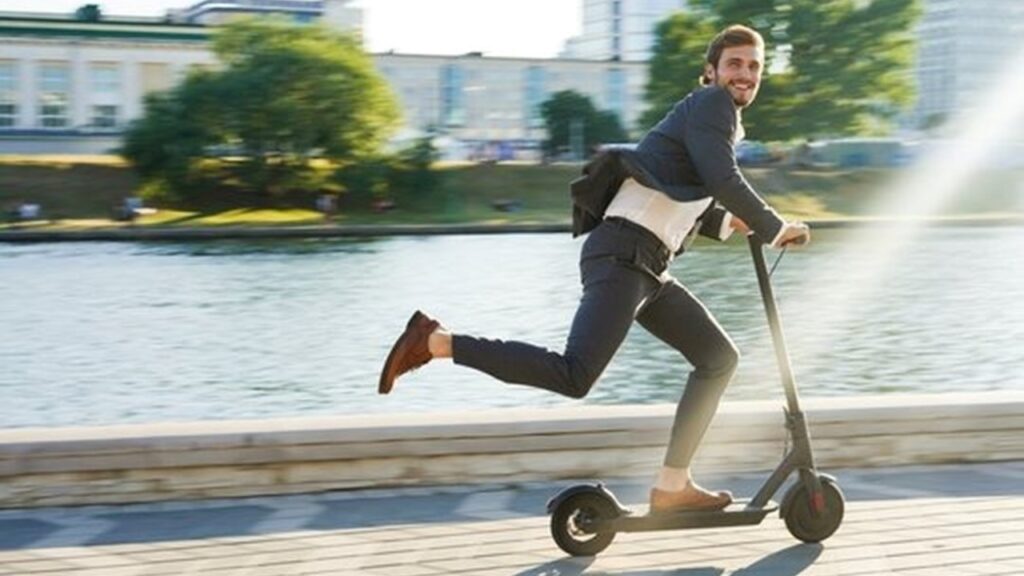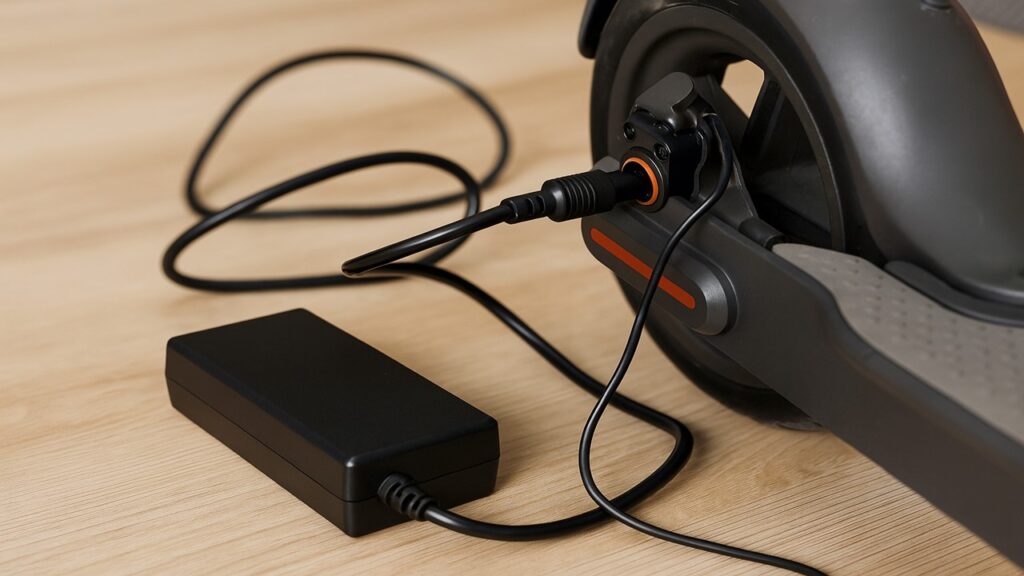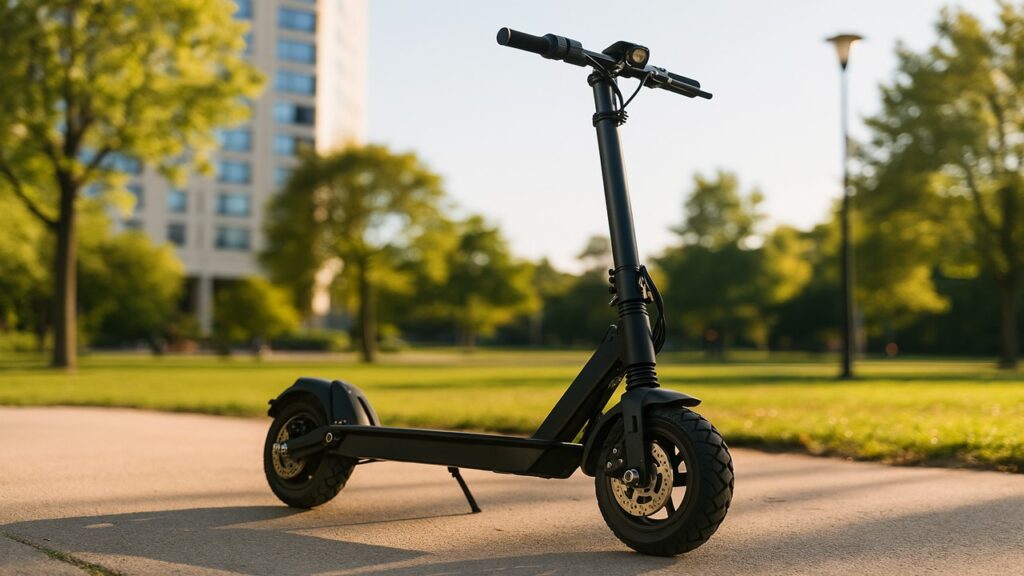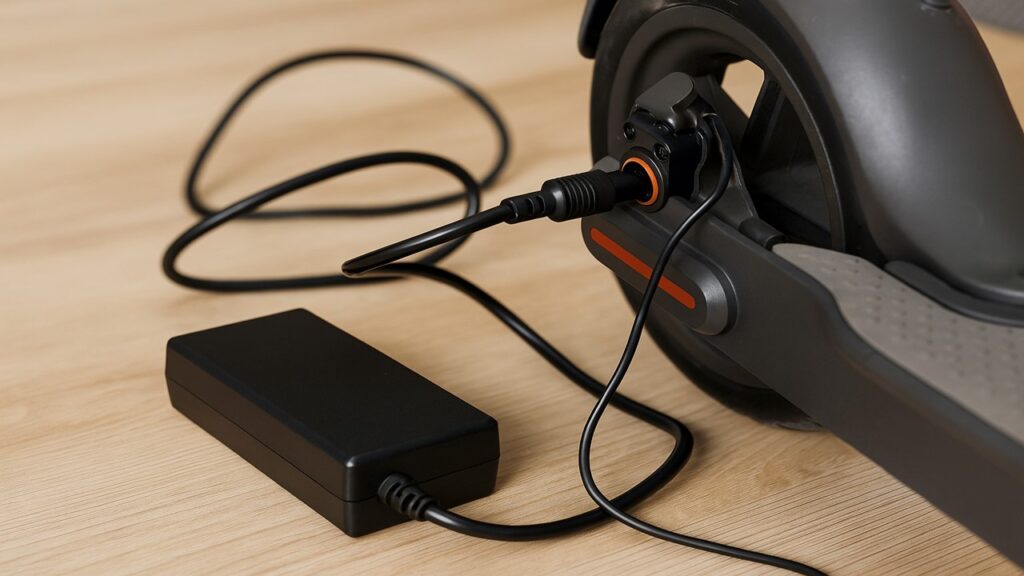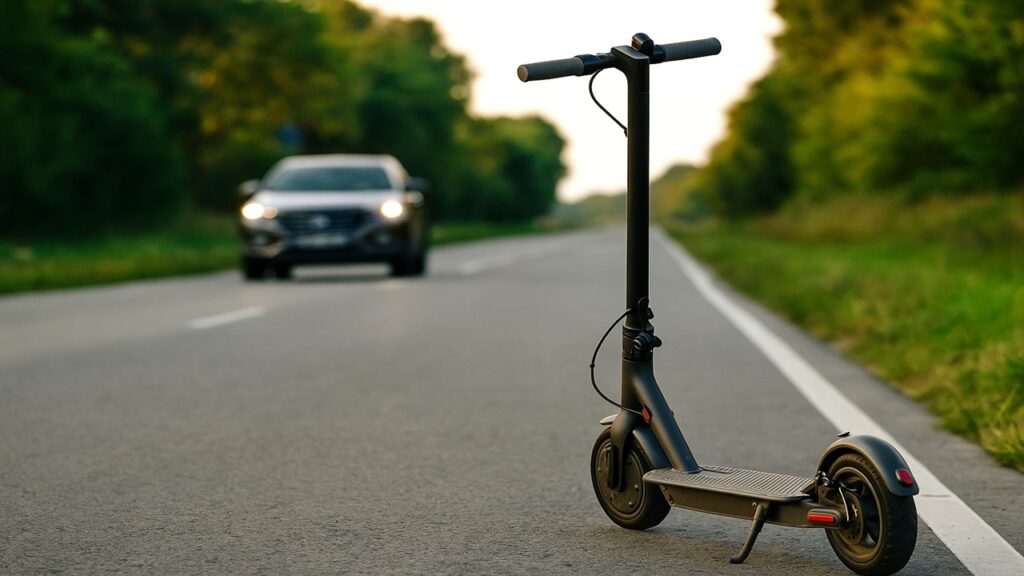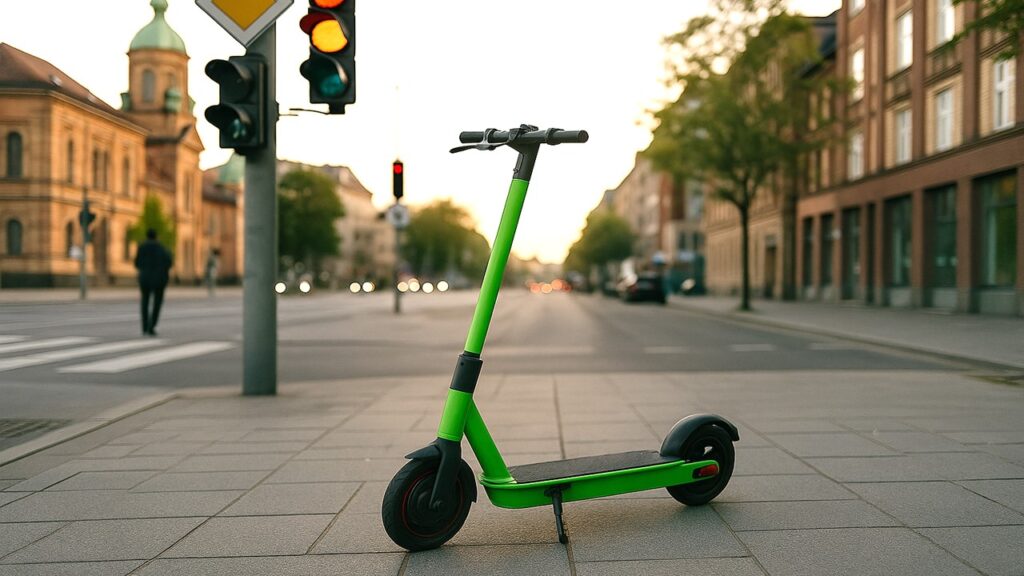
Choosing an electric scooter can feel overwhelming if you’re new to it. With so many models and features out there, it’s easy to get confused. This guide will help you understand what matters most when picking the right scooter for your lifestyle.
We’ll go over the main types of scooters, what features to look for, and how to avoid common mistakes. Whether you need something for daily commutes or weekend fun, this guide will walk you through everything step by step.
Benefits of Using an Electric Scooter
Electric scooters have become a popular way to get around for good reason. They’re practical, eco-friendly, and often much cheaper than owning a car.
Here are some of the main benefits:
- Cost-effective: Once you buy the scooter, the cost to charge and maintain it is very low. You save money on gas, parking, and public transport.
- Eco-friendly: Scooters don’t produce any direct emissions, making them a cleaner way to travel.
- Easy to use: Most models are simple to ride, even for beginners. You don’t need any special training or license in many places.
- Time-saving: In busy cities, scooters can help you skip traffic and shorten your commute.
- Portable and space-saving: Many models fold up, so you can carry them inside or store them in small spaces.
Different Types Of Electric Scooters
Not all electric scooters are the same. They’re built with different riders and purposes in mind. Choosing the right type makes all the difference in how comfortable and useful it feels day to day. Let’s look at the main types of scooters and how each one works best.
Commuter Scooters
Commuter scooters are the go-to option for most city riders. They are lightweight, foldable, and simple to use. These scooters are made for short to medium distances like getting to the office, the train station, or the grocery store.
They usually come with modest motor power and battery size, which is enough for flat, paved roads. Most commuter scooters can go around 15 to 20 miles on a single charge and reach speeds of 15 to 20 miles per hour. That’s more than enough for the average urban rider.
Because they are easy to carry and store, they’re great for people who live in apartments or use public transport. You can fold one up and bring it into work or tuck it away when not in use. If your goal is a simple and efficient ride for daily tasks, this is a solid pick.
Just keep in mind that they’re not built for heavy use or bumpy terrain. If you often ride on hills or rough paths, you might want something with more power and suspension.
Performance Scooters
Performance scooters are made for riders who want more speed, power, and range. These scooters often come with larger motors, dual motors, or advanced battery systems. Some models can reach speeds over 30 miles per hour and travel 40 miles or more on one charge.
They’re a good fit for people with long commutes or those who just enjoy a fast, powerful ride. Performance scooters also tend to have better brakes, larger wheels, and built-in suspension, making them safer and more stable at higher speeds.
Because of their size and features, they do weigh more and cost more too. You might not want to carry one up a flight of stairs, and they’re not as easy to fold or store. But if performance is your top priority and you ride a lot, the trade-offs are worth it.
This type is also ideal for riders who live in hilly areas or need to keep up with traffic in busier parts of the city.
Further reading: Best electric scooter for college
Off-Road Scooters
Off-road scooters are built tough. They come with rugged tires, heavy-duty frames, and strong suspension systems to handle dirt trails, gravel roads, and uneven paths. If you enjoy outdoor adventures or live in a rural area, these can be a fun and reliable choice.
They usually feature wider wheels with deep tread patterns that grip loose surfaces better. Combined with shock absorbers and high ground clearance, they offer a smoother ride even when the road disappears beneath you.
Most off-road scooters also have strong motors and large batteries, so they perform well on rough terrain and steep inclines. However, this extra strength makes them heavier and bulkier than other types. They’re not ideal if you need something lightweight or portable.
These scooters are more niche, but for the right user, they open up a whole new kind of riding experience that regular commuter scooters can’t handle.
Seated Scooters
Seated scooters are designed for comfort, especially on longer rides. Instead of standing the whole time, you get a padded seat and a relaxed posture, which can be a big help for older adults or anyone with back or joint issues.
They often come with larger batteries and more spacious decks, making them great for longer distances or casual cruising. Some even have extra storage or features like turn signals and wide tires for extra stability.
Because of their size and build, they aren’t the most compact option. You’ll need more space to store them, and they’re not easy to carry around. But for many people, the comfort and ease of riding outweigh the lack of portability.
If you plan to ride for long stretches and don’t want to stand the whole time, a seated model might be exactly what you need.
Scooters For Kids Vs Adults
Scooters for kids and scooters for adults might look similar at first glance, but they are built very differently. Kids’ scooters are smaller, lighter, and slower. They usually have limited top speeds and shorter ranges to keep things safe and manageable for younger riders.
These scooters also have simple controls and smaller wheels, which are easier for kids to handle. They’re perfect for short rides around the neighborhood or supervised play in parks. Most are built to support less weight and include safety features like speed caps or parental controls.
Adult scooters, on the other hand, are made with stronger frames and more powerful motors. They can handle heavier riders and longer commutes. If you need something built specifically for higher weight limits, check out our guide on the best electric scooters for heavy adults.
Features like dual braking systems, larger wheels, and built-in lights are common in adult models.
It’s important not to mix the two. A kid’s scooter won’t safely support an adult, and an adult scooter can be too fast or heavy for a child. Always check the weight capacity and age recommendations before buying.
Further reading:
What To Look For When Choosing An Electric Scooter
Not all electric scooters are built the same, and the right one for you depends on how and where you’ll use it. Below are the key things to check before buying, especially if you’re new to scooters. These features can make a big difference in your daily experience.
1. Motor Power And Top Speed
The motor is what powers your ride, so it plays a big role in how fast and smooth your scooter feels. Most entry-level scooters come with motors around 250 to 350 watts. These are good for flat roads and light use.
If you’ll be riding on hills or want quicker acceleration, look for a scooter with at least 500 watts. High-performance models may go up to 1000 watts or more, offering faster speeds and better climbing power. Keep in mind that higher motor power often means a higher price and heavier scooter.
Top speed varies between models. While many commuter scooters cap out around 15 to 20 miles per hour, some performance scooters can go over 30. Before choosing, think about whether you need speed or if a slower ride feels safer for your situation.
2. Battery And Range
Battery size determines how far your scooter can travel on a single charge. This is one of the most important specs to consider, especially if you have a long commute or plan to use it often.
Most scooters in the mid-range category offer a range of 15 to 25 miles. More advanced models can go 40 miles or more, which is ideal for longer rides or fewer charging breaks. Battery life can also be affected by rider weight, terrain, and speed, so always expect real-world range to be a bit lower than what the product claims.
Also consider how long the battery takes to charge. Some take 3 to 4 hours, while larger ones may need 6 to 8 hours or more. If you need quick turnarounds between rides, charging time is something to factor in.
3. Weight And Portability
Weight and portability matter most if you plan to carry your scooter upstairs, store it in tight spaces, or combine it with public transport. Many commuter scooters weigh between 25 and 35 pounds and can be folded down for easier handling.
If your scooter is too heavy or awkward to carry, it might be a hassle to use daily, especially in city life. Some lightweight models are made specifically with portability in mind, while heavier ones usually come with more features and stronger frames.
Think about where you’ll keep the scooter when it’s not in use. If you live in an apartment or need to bring it into work, smaller and foldable models are more practical.
4. Tires And Suspension
Tires play a big role in ride comfort and grip. There are two main types: solid (airless) tires and pneumatic (air-filled) tires. Solid tires are low maintenance and don’t get flats, but they give a bumpier ride. Pneumatic tires offer better shock absorption and traction, which is helpful on rough or uneven surfaces.
Suspension is another feature that improves ride quality. Not all scooters have it, but if you plan to ride on bumpy streets or for long distances, front or rear suspension can help reduce strain on your wrists and knees.
If comfort is a top priority, try to choose a scooter with pneumatic tires and at least some form of suspension.
5. Braking System
Good brakes are essential for staying safe, especially at higher speeds. Electric scooters may come with different types of braking systems, including:
- Mechanical brakes: Disc or drum brakes, operated by hand levers
- Electronic brakes: Slows the motor down electronically, often paired with regenerative braking
- Foot brakes: Found on some budget models, where you step on the rear fender to slow down
Disc brakes generally provide the best stopping power and are a great choice if you ride in busy areas. Electronic brakes are smooth and low maintenance, but they’re not always enough on their own. The best setups usually combine multiple braking systems for added safety.
6. Safety Features
While motor and battery specs are important, safety should never be overlooked. At the very least, make sure your scooter has front and rear lights so you can see and be seen. Reflectors, brake lights, and a loud horn or bell are also useful for urban riding.
Some scooters now come with smart safety features, like app-based locking systems, theft alerts, and turn signals. These features are especially helpful if you’re riding in traffic or storing your scooter in public spaces.
If you plan to ride at night or in busy areas, prioritize models with bright, built-in lighting and multiple visibility features.
7. Build Quality And Water Resistance
Lastly, check how well the scooter is built. A sturdy frame made of aluminum or steel will last longer and handle daily use better than cheaper plastic options. Look for a wide deck, a stable stem, and overall solid construction.
Water resistance is another key factor. Many scooters are not fully waterproof, but a model with an IP rating (like IP54 or IP67) can handle light rain or wet roads. If you live in a place with unpredictable weather, make sure your scooter can handle some exposure to water without getting damaged.
Choosing a well-built scooter may cost a bit more upfront, but it will likely save you headaches and repair costs down the road.
Read more: Best electric scooters for teens
Price Ranges And What You Get At Each Level
Electric scooters come in a wide range of prices, and what you get for your money can vary a lot. Knowing what to expect at each price point helps you avoid overpaying or ending up with a scooter that doesn’t meet your needs.
Here’s a simple breakdown of what most scooters offer at each level:
Entry-level (under $400):
- Basic motors and lower top speeds (around 15 mph)
- Shorter range (10 to 15 miles per charge)
- Lightweight and often foldable, but limited comfort and features
- Best for short city rides or beginners on a tight budget
Mid-range ($400 to $900):
- Stronger motors with better acceleration and hill climbing
- Longer range (15 to 30 miles)
- Larger wheels, better brakes, and basic suspension in some models
- A good balance for daily commuting or general urban use
Premium ($900+):
- High speed and powerful motors (some over 1000W)
- Long range (30 to 60+ miles)
- Full suspension, hydraulic brakes, smart features, and advanced safety
- Ideal for long-distance rides, rough terrain, or frequent use
Legal Rules And Safety Basics
Before you ride, it’s important to check the local laws about electric scooters in your area. Rules vary by country, state, and even city. In some places, electric scooters are allowed on bike lanes, while in others they’re banned from sidewalks altogether.
Most areas have age restrictions, speed limits, and helmet requirements. For example, some cities only allow riders 16 or older and require helmets for all under 18. Speed limits are often capped at around 15 to 20 mph for public road use.
It’s also a good idea to make your scooter as visible as possible, especially when riding at night. Use front and rear lights, wear reflective clothing, and avoid weaving through traffic.
If your scooter has a mobile app, check if it offers safety features like GPS tracking, remote locking, or ride data. These extras can give you peace of mind when riding or parking in public spaces.
Maintenance Tips To Keep Your Scooter Running Smoothly
Taking care of your scooter helps it last longer and ride better. You don’t need to be a mechanic—just a few simple checks and habits can go a long way.
- Charge the battery regularly: Try not to let it drop below 20 percent. It’s best to top it up after each ride.
- Keep tires properly inflated: For air-filled tires, check pressure weekly. Under-inflated tires wear out faster and affect ride comfort.
- Clean the scooter after wet or dirty rides: Wipe down the deck, wheels, and frame to prevent rust or buildup.
- Check the brakes: Test them before each ride. Adjust or tighten them if they feel loose.
- Inspect for wear and tear: Look over the wheels, handlebars, folding mechanism, and cables regularly.
- Store it indoors when possible: This protects it from rain, sun damage, and theft.
Common Mistakes First-Time Buyers Should Avoid
It’s easy to get caught up in the excitement and make a rushed decision. Here are a few common mistakes new scooter buyers make—and how to avoid them.
- Choosing based on looks alone: A sleek design is great, but don’t ignore motor power, battery range, and safety features.
- Not checking weight capacity: Make sure the scooter can safely support your weight, especially if you’re carrying a backpack or groceries.
- Ignoring terrain needs: If you’ll ride on bumpy roads or hills, you’ll need stronger suspension and more motor power.
- Overlooking real range: Advertised range is often under ideal conditions. Consider how far you’ll actually ride and choose accordingly.
- Skipping reviews and comparisons: Reading what real users say about performance, comfort, and issues can save you a lot of regret later.
- Not considering where to store or charge it: If you don’t have a safe spot to keep it or easy access to an outlet, that’s a problem.
Final Words
Choosing the right electric scooter doesn’t have to be complicated. Once you understand the basics—like the types of scooters, what features matter most, and how to match a scooter to your lifestyle—it becomes much easier to make a smart choice.
Think about where and how you’ll ride, how far you need to go, and what kind of comfort or power you expect.
Check things like motor strength, battery range, braking systems, and overall build quality before making a decision. And don’t forget to factor in local laws and safety gear to keep your rides smooth and worry-free.
Whether you’re looking for a simple commuter scooter or a high-performance ride, taking the time to choose wisely will pay off every time you hit the road.

Nusrat is an electric scooter enthusiast and daily rider who loves exploring new ways to make urban commuting cleaner and more enjoyable. She shares hands-on reviews, performance insights, and practical riding tips to help others find reliable, safe, and affordable electric scooters. Through her detailed guides and real-world experience, Nusrat helps riders make smarter choices and enjoy every ride with confidence.



